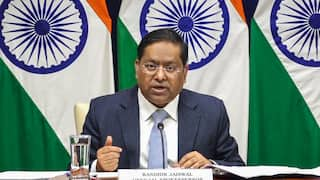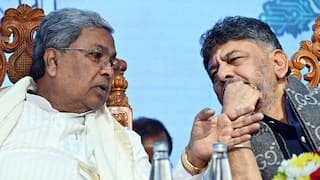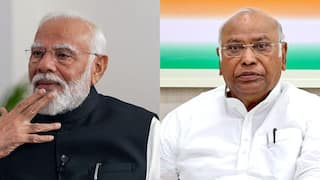India's GDP Data To Be Released Today Amid High Inflation, Russia-Ukraine Conflict | Check Projections
The economy's near-term prospects have been impacted by a spike in its retail inflation (CPI), which went on to hit an eight-year high of 7.8 per cent in April

New Delhi: The government will release the gross domestic product (GDP) growth data for the fourth quarter of 2021-22 as well as for the complete fiscal on Monday amid challenges such as the Omicron triggered third wave, Russian-Ukraine conflict pushed commodity prices, and squeezed supplies. Most analysts have predicted the January-March 2022 growth to be lower at 2.7-4.5 per cent than the 5.4 per cent reported in the previous quarter.
The economy had grown by 0.5 per cent in the third quarter of 2020-21, 1.6 per cent in the fourth quarter of 2020-21, 20.1 per cent in the first quarter of 2021-22 and 8.4 per cent in the second quarter of the current fiscal year.
Here’s what to expect in the latest GDP numbers:
Government projection
Going by the estimate of the Ministry of Statistics and Programme Implementation (MoSPI), which releases GDP data, the economy will grow at 8.9 per cent in 2021-22 compared to a contraction of 6.6 per cent seen in 2020-21.
The Reserve Bank of India (RBI) has projected 9.5 per cent of GDP growth for 2021-22 and kept March quarter growth at 6.1 per cent.
Analysts prediction
India's GDP probably grew 4 per cent in the January-March quarter from a year earlier, as per a the Reuters poll, slowest pace in a year, following 5.4 per cent growth in the previous quarter. While the State Bank of India's research team predicts India's growth at 2.7 per cent for the fourth quarter of FY22, while rating agency Icra sees 3.5 per cent growth.
While the GDP in the year to March 2022 grew 8.7 per cent from a year ago, according to the median estimate in a Bloomberg survey, slower than the 8.9 per cent expansion projected by the Statistics Ministry three months ago.
The economy's near-term prospects have been impacted by a spike in its retail inflation (CPI), which went on to hit an eight-year high of 7.8 per cent in April.
In a surprise move, the RBI Governor Shaktikanta Das raised the benchmark repo rate by 40 basis points earlier in May. The governor said last week that the central bank's primary focus was to bring inflation closer to its target but it could not disregard concerns around growth.
Economists have revised down India's growth forecast for 2022 in view of the rising energy and food prices that have hit consumer spending, which accounts for 55 per cent of the economy while most companies try to pass on rising input costs to consumers.
High-frequency indicators such as electricity consumption data, weekly labour market data, and data on retail sales, fuel sales, raw steel production, and others showed supply shortages and higher input prices were weighing on output in the mining, construction and manufacturing sector, even as credit growth has picked up and states are spending more.
Both inflation and the country's current account deficit will likely get worse due to broad-based price pressures and record-high commodity prices, as per economists.






































